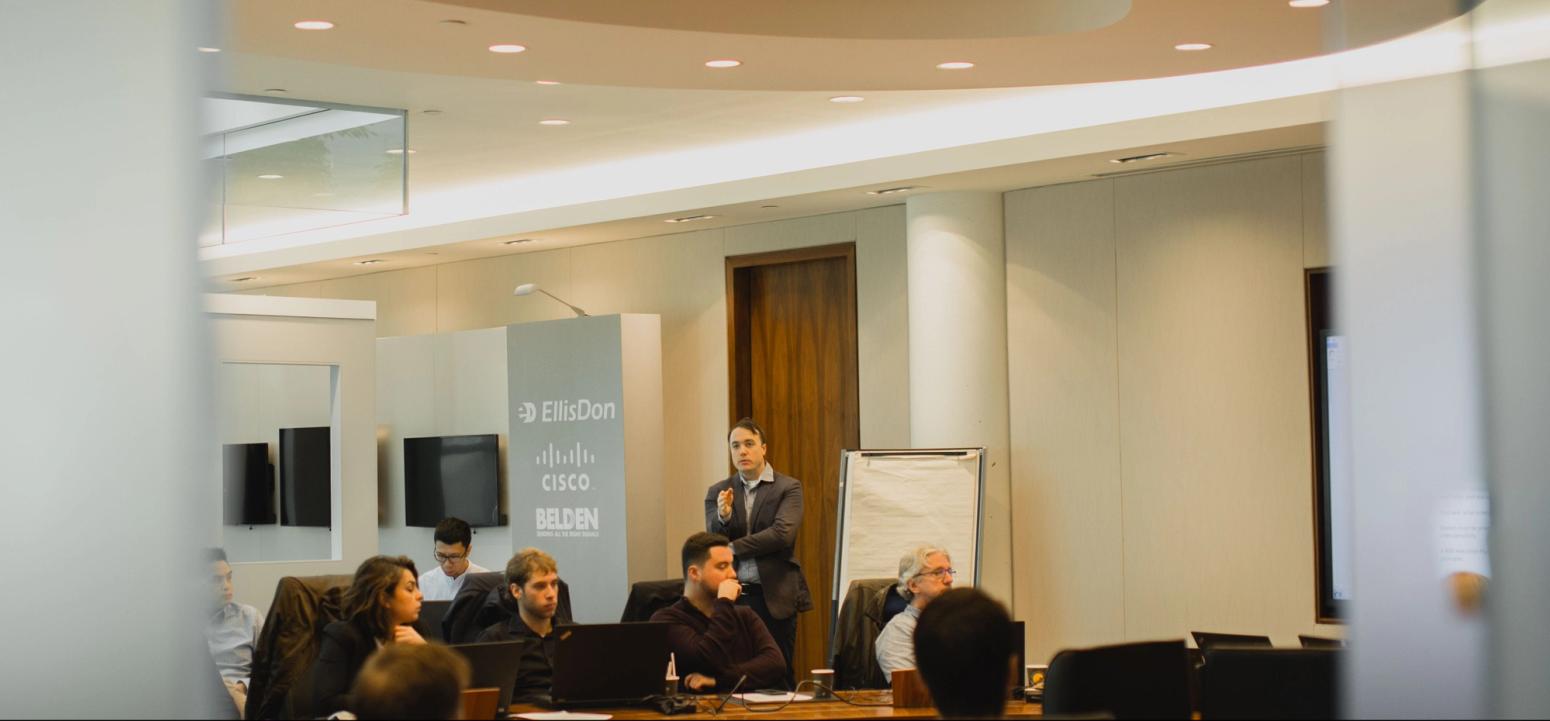News
Buildex workshop assesses BIM’s impact on Canadian construction
Tom Strong speaks at EllisDon's Virtual Design and Construction Annual General Meeting last year.
Article by: Richard Gilbert for the Journal of Commerce
The use of new technology is an important driving force behind a shift to more collaborative and integrated ways of working for various stakeholders in the construction process, says an expert in Building Information Modeling (BIM).
Buildex workshop assesses BIM’s impact on Canadian construction
"As a general contractor, we have seen a shift in where we apply our efforts," said Tom Strong, director of virtual construction with EllisDon Construction."It used to be we had a lot of people who manage and deal with issues as fast as they were uncovered, while negotiating and driving the project schedule. Now, we are in need of people who co-ordinate and manage a process upfront and understand the nuances of integrating this information as well as having a fundamental understanding of what are the parts of the building and how they are allowed to come together."Strong made this comment to highlight the main theme of an educational workshop entitled How Technology Has Changed the Building Industry: Protecting Your Job Against Robots, which he will present at Buildex Vancouver 2017 on Feb. 16. Participants in this workshop will learn about the impact of BIM technology on the construction labour force in Canada.BIM involves the generation and management of digital representations of physical and functional characteristics of places. It uses files that can be exchanged or networked to support decision-making. For this reason, BIM software is used to design, construct, operate and maintain physical infrastructure."The old-school construction methodology was that the general contractor would show up onsite with plans and raw materials and then manage labour and negotiate routing as they build," said Strong, who is also president of the Canada BIM Council."These days we are doing that cognitive planning work down to the nut and bolt level six months prior to construction. We have a collaborative approach which involves the integration of all the various subtrades into a system where they can all contribute to providing a level of detail in planning and how to build."According to Strong, general contractors are managing a construction process, where the designer of a building project may or may not produce a 3-D model.This means the general contractor is hiring subtrades, but they can't build off the initial set of drawings because there is not enough detail.In response to this problem, general contractors set up a co-ordination process in 3-D, which allows subtrades to collaborate by producing models to a very high level of detail that can be used for fabrication.The contract type is one factor that determines how stakeholders in the construction process collaborate."With a lump sum contract, collaboration is possible, but it is more difficult because the designers are required to work in a silo without the general contractor and subtrades input," said Strong. "When the low price wins, the process becomes adversarial, because any type of mistake ends up being a change order, or there is a battle over cost. The owner does not necessarily get to steer the quality of the project or make fluid changes within reason, as they would be able to with other contract models."The design-build contract allows for subtrades and consultants to be fully integrated and working together intimately from the design stage all the way to construction.Strong said a consortium is usually involved with a design-build project. If the project is a public-private partnership, the consortium includes facilities managers and the operators of the building, who also provide input at the design and the planning stage.Technological changes and the shift to a collaborative construction process is generating demand for people who can evaluate 3-D models and work out the details of the project upfront."If you are a young professional entering the construction field and you are involved in a situation where you are reacting to issues, I recommend that you start developing the skillset to be part of the process to refine the building upfront in a proactive way," said Strong. "This applies whether you are providing input to the process or managing the process."Strong is responsible for the strategic direction of EllisDon's BIM Initiative and the adaption of new innovative solutions. He has been working in construction research, development and engineering for about 13 years.






